Home>Articles>How To Turn A Screened Porch Into A Three Season Room
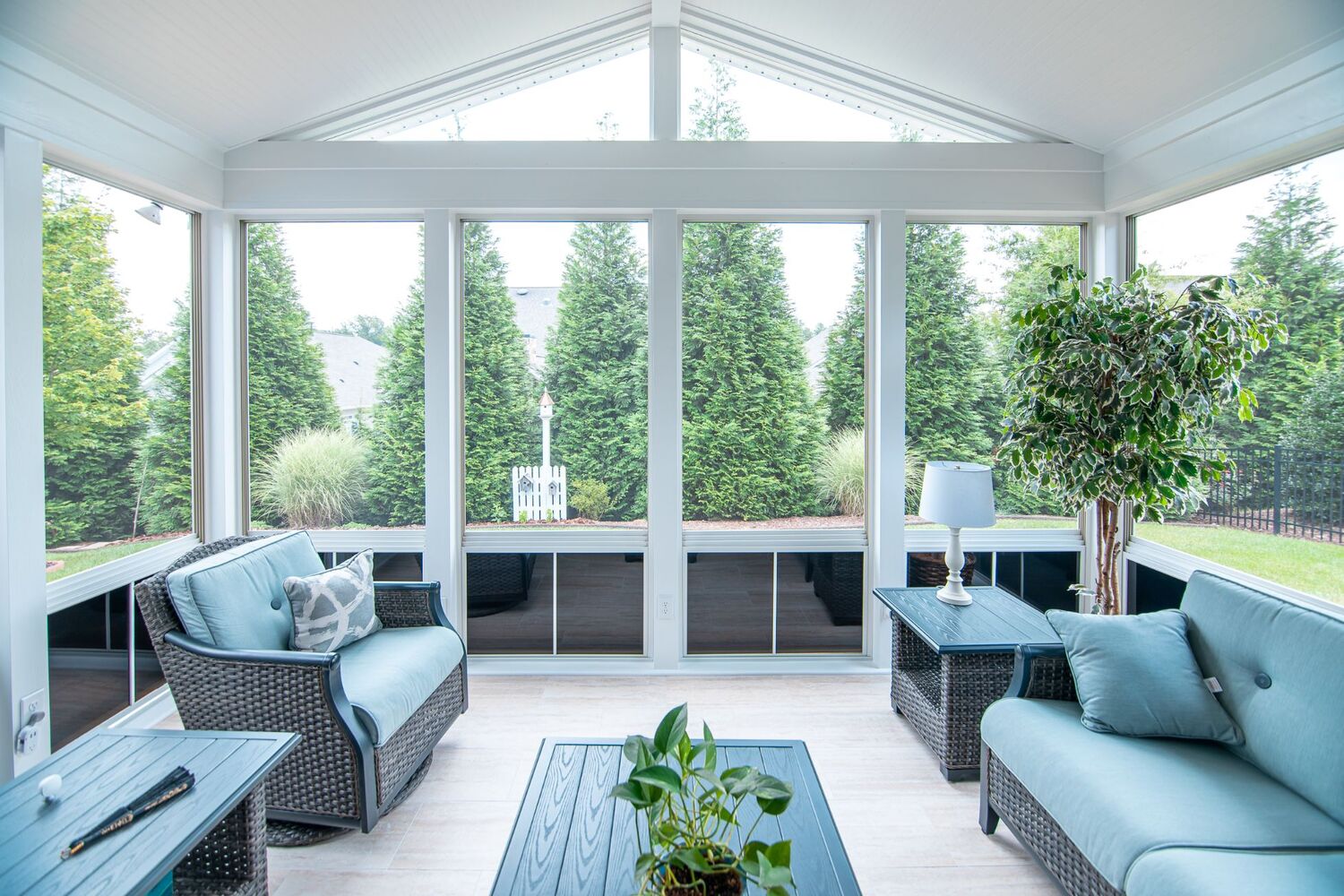

Articles
How To Turn A Screened Porch Into A Three Season Room
Modified: October 28, 2024
Learn how to transform your screened porch into a versatile three season room with our informative articles. Discover tips and ideas to maximize your outdoor living space.
(Many of the links in this article redirect to a specific reviewed product. Your purchase of these products through affiliate links helps to generate commission for Storables.com, at no extra cost. Learn more)
Introduction
Welcome to the world of three season rooms! If you have a screened porch and are looking to upgrade it into a versatile space that can be enjoyed throughout most of the year, you’ve come to the right place. In this article, we’ll guide you through the process of turning your screened porch into a three season room.
A three season room, as the name suggests, is a space that can be comfortably used during three out of the four seasons. It provides protection from the elements, allowing you to enjoy the outdoors without being directly exposed to rain, wind, or extreme temperatures. Whether you want to relax, entertain guests, or simply embrace the beauty of nature, a three season room offers a perfect oasis.
While the idea of transforming your screened porch into a three season room may sound daunting, with careful planning and execution, it can be a rewarding and enjoyable project. By following the steps we outline in this article, you can create a space that seamlessly blends the comfort of indoors with the beauty of the outdoors.
We’ll cover everything you need to know, from assessing your current screened porch and determining its purpose, to selecting the right materials, obtaining permits, and adding the finishing touches. By the end, you’ll have a comprehensive understanding of the process and be ready to embark on your three season room transformation.
So, if you’re ready to take your screened porch to the next level and enjoy it year-round, let’s dive in and begin the journey of turning your screened porch into a three season room!
Key Takeaways:
- Transforming a screened porch into a three-season room involves careful planning, choosing the right materials, and considering heating and cooling options to create a comfortable and versatile space that seamlessly blends indoor and outdoor living.
- Regular maintenance and upkeep are essential for prolonging the lifespan of a three-season room, ensuring it remains in top condition and continues to provide a comfortable and enjoyable space for years to come.
Read more: How To Turn Deck Into Screened-In Porch
Planning and Designing
Before you begin the transformation of your screened porch into a three season room, it’s important to start with thorough planning and designing. This step will lay the foundation for a successful and functional space that meets your needs and preferences.
Start by envisioning how you want your three season room to look and feel. Consider its purpose – will it be a cozy retreat for reading and relaxation, a space for entertaining guests, or a multipurpose area for various activities? Understanding its intended function will guide your decisions throughout the planning and design process.
Next, assess the size and layout of your existing screened porch. Take measurements and note any architectural features or limitations, such as structural pillars or sloped ceilings. This information will help you determine the feasibility of your design ideas and identify any necessary modifications.
Once you have a clear vision and understanding of your space, it’s time to create a design plan. Sketch out your ideas on paper or use design software to create a digital layout. Consider the placement of windows, doors, furniture, and any additional features you envision, such as a fireplace or built-in shelving.
When designing your three season room, strive for a seamless integration with the rest of your home’s aesthetic. Consider factors such as color schemes, materials, and architectural styles to ensure a harmonious transition between indoor and outdoor spaces.
Additionally, think about how you can maximize natural light in your three season room. Windows and skylights are excellent choices for bringing in sunlight and creating a bright and airy atmosphere. They also provide the opportunity to take in panoramic views of your garden or backyard.
Lastly, don’t forget about ventilation. Since a three season room is not fully enclosed like a traditional indoor space, it’s important to incorporate proper ventilation options. This can include ceiling fans, operable windows, or even retractable screens for when you want to let in a fresh breeze.
By investing time and effort into thorough planning and designing, you’ll set the stage for a successful transformation of your screened porch into a three season room. So, grab your pen and paper, let your creativity flow, and start envisioning the beautiful space you’ll soon be enjoying!
Assessing the Current Screened Porch
Before you can begin the transformation process, it’s crucial to assess the current state of your screened porch. This step will help you identify any issues or areas that need attention, and determine the feasibility of converting it into a three season room.
Start by inspecting the structure of the screened porch. Look for signs of damage, such as rotting wood, loose boards, or insect infestations. These issues should be addressed and repaired before proceeding with any modifications.
Next, evaluate the condition of the screens. Check for tears, holes, or sagging screens. If they’re in good shape, they can be removed to make way for windows. However, if they’re damaged, consider replacing them with new screens or opting for other window options.
Assess the flooring as well. Is it solid and level, or does it need to be repaired or replaced? Consider the type of flooring that best suits your needs and preferences, such as hardwood, laminate, or tile.
It’s also important to evaluate the size and shape of your screened porch. Determine if it provides enough space for your desired three season room layout. If not, you might need to consider expanding the porch or making modifications to the existing layout.
Consider the orientation of your screened porch in relation to the sun. Take note of how much sunlight it receives throughout the day and at different times of the year. This will help you determine the placement and size of windows to optimize natural light.
Lastly, assess the overall aesthetics of your screened porch. This includes its style, color scheme, and architectural details. Consider whether these aspects should be preserved or modified to match your vision for the three season room.
By thoroughly assessing your current screened porch, you’ll have a clear understanding of its condition and any necessary improvements or modifications needed for the transformation. This step helps ensure a smooth and successful transition, allowing you to create the ideal three season room that you’ve been dreaming of.
Determining the Purpose and Function of the Three Season Room
When transforming your screened porch into a three season room, it’s important to have a clear understanding of its purpose and function. This will guide your design decisions and ensure that the space meets your specific needs and desires.
First and foremost, consider how you intend to use your three season room. Will it be a tranquil retreat for relaxation and unwinding? A space to entertain guests and host gatherings? Or perhaps a versatile area that serves multiple purposes, such as a home office, exercise room, or playroom for children?
Think about the activities you envision taking place in the space. This will influence the layout, furniture choices, and any additional features you may need. For example, if you plan to use the three season room as a dining area, you’ll need a suitable table and chairs. If it’s intended as a reading nook, comfortable seating and good lighting will be key.
Consider the number of people who will be using the three season room. This will determine the amount of seating and the overall size requirements. If you often entertain guests, you’ll want to ensure there’s enough room for everyone to feel comfortable.
Think about the ambiance you want to create. Do you prefer a cozy and intimate space, or an open and airy atmosphere? This will influence your choice of flooring, window treatments, lighting, and overall decor.
Consider the seasons during which you plan to use the three season room. Will it primarily be utilized during the spring and fall months, or do you intend to extend its use into colder or hotter seasons as well? This will impact your choice of insulation, heating or cooling options, and any additional features that can enhance the comfort level during different times of the year.
Finally, think about the connection between your three season room and the rest of your home. How will it flow with the adjacent indoor spaces? Consider the transition from the main living area to the three season room and ensure a seamless integration of style and design.
By determining the purpose and function of your three season room, you’ll be able to create a space that is tailored to your specific needs and preferences. This step is essential in ensuring that the transformation of your screened porch meets your expectations and enhances your overall lifestyle.
Establishing a Budget
As you embark on the journey of transforming your screened porch into a three season room, it’s important to establish a realistic budget. This will help guide your decision-making process and ensure that you stay within your financial means throughout the project.
Start by determining how much you’re willing to invest in the transformation. Consider your overall financial situation, including any other home improvement projects you have planned. Be honest with yourself about what you can comfortably afford, taking into account factors such as materials, labor costs, and any unforeseen expenses that may arise.
Research and gather information about the average costs associated with converting a screened porch into a three season room. This will give you a ballpark estimate of what to expect. Keep in mind that the final cost will depend on factors such as the size of your space, the materials chosen, and any additional features you decide to incorporate.
Consider prioritizing your budget based on your needs and goals for the three season room. Identify areas where you’re willing to splurge and others where you can cut back. For example, you may prioritize high-quality windows and insulation to ensure energy efficiency, while opting for more budget-friendly flooring options.
It’s also important to allocate a portion of your budget for unexpected expenses. Home improvement projects often come with surprises along the way, such as hidden structural issues or necessary repairs. Having a buffer in your budget will help you navigate these unforeseen circumstances without feeling financially strained.
Research and compare prices for materials, windows, doors, and any other necessary components of your three season room. Don’t forget to also consider labor costs if you’ll be hiring professionals to assist with the project. Get multiple quotes from reputable contractors to ensure you’re getting a fair price.
In addition, factor in the cost of any necessary permits or approvals required by your local building department. It’s essential to obtain the proper permits before beginning any construction work to ensure compliance with local regulations.
Remember that your budget should not only cover the construction and materials but also any additional furnishings, decor, or accessories you plan to incorporate into the space. Consider the cost of furniture, lighting fixtures, window treatments, and any other elements that will enhance the functionality and aesthetics of your three season room.
By establishing a well-thought-out budget, you’ll be able to make informed decisions throughout the process of transforming your screened porch into a three season room. This will help you create a space that meets your needs and aspirations, while keeping your finances in check.
Obtaining Necessary Permits and Approvals
Before you can begin the transformation of your screened porch into a three season room, it’s important to ensure that you have all the necessary permits and approvals required by your local building department. This step is essential to ensure compliance with local regulations and to avoid any legal issues down the line.
Start by researching the specific permits and approvals needed for your project. Each jurisdiction may have different requirements, so it’s important to know what applies to your area. Common permits include building permits, electrical permits, and plumbing permits, depending on the scope of your project.
Contact your local building department to learn about the application process and any associated fees. They will provide you with the necessary forms and requirements specific to your area. It’s important to follow their guidelines to avoid any delays or penalties.
Prepare all the required documentation for your permit application. This may include detailed plans or blueprints of the proposed three season room, specifications for materials used, and any other relevant information. It’s important to be thorough and provide accurate information to ensure a smooth review process.
Submit your permit application along with the required documents and fees to your local building department. Be prepared for a waiting period as they review your application. The duration of this process can vary depending on your jurisdiction and the complexity of your project.
During the review process, the building department may request additional information or modifications to your plans. It’s important to be responsive to their requests and provide any necessary revisions promptly. Open communication and cooperation will help expedite the approval process.
Once you receive the necessary permits and approvals, make sure to keep them in a safe and easily accessible place. You may need to provide proof of permits during inspections or if any questions arise in the future. Compliance with local regulations is essential for the safety of your project and the overall value of your property.
It’s important to note that if you hire a contractor for the project, they may take on the responsibility of obtaining the permits and approvals on your behalf. However, it’s crucial to verify this with them beforehand and ensure that they are knowledgeable about the local regulations and process.
By obtaining the necessary permits and approvals, you can proceed with the transformation of your screened porch into a three season room with peace of mind. This step ensures that your project complies with local building codes and regulations, providing a safe and legal space for you and your family to enjoy.
Choosing the Right Materials
When transforming your screened porch into a three season room, selecting the right materials is essential for creating a durable, functional, and visually pleasing space. The materials you choose will impact everything from the aesthetics and comfort to the longevity and maintenance requirements of your three season room. Here are some factors to consider when making your material selections:
1. Windows and doors: The type and quality of windows and doors you choose will have a significant impact on the overall performance and energy efficiency of your three season room. Look for windows and doors that offer good insulation properties, weather sealing, and durability. Options such as double or triple-pane windows, low-emissivity (Low-E) glass, and insulated frames can help regulate temperature and reduce energy costs.
2. Flooring: Choose a flooring material that can withstand varying weather conditions and heavy foot traffic. Options such as porcelain or ceramic tiles, luxury vinyl planks, or laminate flooring provide durability, resistance to moisture, and easy maintenance. Consider the aesthetic appeal and the level of comfort underfoot as well.
3. Insulation: Insulating your three season room is crucial for maintaining comfortable temperatures and energy efficiency. There are various insulation options available, such as foam insulation boards or spray foam insulation. Consult with professionals to determine the appropriate insulation for your specific project, taking into account the climate in your area.
4. Walls: Depending on your design preferences and budget, you can choose between different wall materials, such as drywall, beadboard, or tongue-and-groove paneling. Each material has its unique aesthetic and maintenance requirements, so consider factors such as durability, ease of cleaning, and the level of visual impact you desire.
5. Ceiling: When it comes to the ceiling, you can choose to retain the existing structure or opt for materials that provide a more finished and polished look. Consider options such as tongue-and-groove wood planks, PVC panels, or suspended ceiling systems. Each material has its pros and cons in terms of aesthetics, maintenance, and cost, so choose one that aligns with your style preferences.
6. Exterior finishes: Don’t forget to consider the exterior finishes of your three season room. Opt for materials that can withstand exposure to the elements, such as weather-resistant siding or cladding. Choose colors and textures that complement your home’s exterior and create a cohesive look.
Keep in mind that while selecting the right materials is important, it’s equally crucial to work within your budget. Compare prices, consider the long-term durability and maintenance requirements of each material, and make decisions that align with your financial constraints.
Consulting with professionals, such as contractors or designers, can provide valuable insights and recommendations tailored to your specific project. They can help you navigate the array of material options and guide you towards the best choices for your three season room.
By choosing the right materials, you’ll create a three season room that not only enhances the beauty and functionality of your home but also withstands the test of time and provides a comfortable retreat for years to come.
Consider adding insulated windows to your screened porch to create a three season room. This will help keep out the cold in the winter and extend the use of the space into the cooler months.
Insulating the Walls and Ceiling
Insulating the walls and ceiling of your three season room is essential for maintaining a comfortable and regulated indoor temperature throughout the year. By properly insulating these areas, you’ll enhance energy efficiency, reduce heat loss or gain, and create a cozy environment regardless of the outside weather. Here are some key considerations when insulating the walls and ceiling:
1. Choose the right insulation materials: There are various insulation materials available, each with its own pros and cons. Fiberglass insulation, foam insulation, and cellulose insulation are popular options. Consult with professionals to determine the most suitable insulation type for your specific needs, taking into account factors such as effectiveness, cost, ease of installation, and environmental impact.
2. Determine the insulation R-value: The R-value measures the resistance of insulation to heat flow. Higher R-values indicate better insulation performance. Check the building codes or consult with professionals to determine the recommended R-value for your region. This will ensure that your three season room is properly insulated and meets the required efficiency standards.
3. Install insulation in the walls: Insulating the walls of your three season room is crucial for preventing unwanted heat transfer and improving thermal comfort. Depending on the construction of your walls, you may install insulation by placing it between the wall studs or using insulation boards on the interior or exterior surfaces. Follow proper installation techniques to ensure maximum effectiveness and minimize air gaps.
4. Insulate the ceiling: The ceiling is another important area to insulate for temperature regulation and energy efficiency. Depending on the design of your three season room, you may opt for insulation between the rafters or use insulation boards on the ceiling surface. Pay special attention to insulation near the roofline to prevent heat transfer from the sun’s rays.
5. Address air leakage and drafts: In addition to insulation, it’s crucial to seal any air leaks or drafts in the walls and ceiling. Use weatherstripping, caulking, or foam insulation spray to seal gaps around windows, doors, electrical outlets, and any other openings. This will enhance the effectiveness of your insulation and prevent heat loss or entry of cold air.
6. Consider vapor barriers: Depending on the climate in your region, you may need to install vapor barriers to control moisture buildup. Vapor barriers are typically installed on the warm side of insulated walls and ceilings to prevent condensation. Consult with professionals to determine if a vapor barrier is necessary for your specific project.
Properly insulating the walls and ceiling of your three season room will provide numerous benefits, including increased energy efficiency, enhanced comfort, and reduced utility bills. It’s important to follow recommended practices and consult with professionals to ensure that your insulation is installed correctly and complies with local building codes.
By taking the time to insulate your three season room, you’ll create a space that can be enjoyed throughout the year, regardless of the outside temperature. So, invest in quality insulation materials, follow proper installation techniques, and create a cozy and energy-efficient haven within your home.
Adding Flooring and Finishing Touches
Once you have completed the insulation and structural elements of your three season room, it’s time to focus on adding the flooring and finishing touches that will bring your space to life. The right flooring and final touches can enhance the aesthetics, functionality, and comfort of your three season room. Here are some important considerations:
1. Choose the right flooring: Selecting the right flooring for your three season room is crucial as it not only contributes to the overall look but also affects the durability and maintenance of the space. Consider flooring options that are suitable for semi-outdoor environments and can withstand temperature fluctuations, moisture, and heavy foot traffic. Popular choices include porcelain or ceramic tiles, luxury vinyl planks, or laminate flooring.
2. Opt for comfort underfoot: Since your three season room is an additional living space, prioritize the comfort factor. Consider adding a soft carpet or area rug to areas where you and your guests will spend a significant amount of time, such as seating areas or reading nooks. This will create a cozy and inviting atmosphere.
3. Add appropriate window treatments: Choose window treatments that offer both privacy and flexibility in controlling the amount of natural light and heat that enters your three season room. Options such as blinds, shades, or curtains can help regulate the temperature and create a pleasing ambiance. Consider materials that are resistant to fading from sun exposure and easy to clean.
4. Consider lighting options: Proper lighting is crucial in creating the desired atmosphere in your three season room. Incorporate a combination of ambient, task, and accent lighting to accommodate various activities and moods. Consider options such as recessed lighting, pendant lights, floor or table lamps, and even string lights to add a touch of whimsy.
5. Personalize with furniture and decor: Furnishing your three season room will transform it into a functional and inviting space. Choose furniture pieces that are appropriate for semi-outdoor environments and can withstand exposure to moisture. Consider durable materials such as wicker, rattan, or aluminum with weather-resistant cushions. Add additional comfort with pillows and throws in fabrics that are both cozy and resistant to weather elements.
6. Enhance the ambiance with plants and greenery: Incorporating plants and greenery in your three season room will bring a touch of nature indoors and create a refreshing atmosphere. Choose plants that thrive in the lighting conditions of your room and are suitable for semi-outdoor spaces. Hanging plants, potted plants, and vertical gardens are great options to add life and vibrancy to the space.
7. Personalize the space: Finally, add personal touches that reflect your style and create a space that feels uniquely yours. Display artwork, photographs, or decorative items that resonate with you. Incorporate elements such as comfortable throws, pillows, or rugs in colors and patterns that evoke a sense of relaxation and enjoyment.
Remember to balance functionality with aesthetics when adding flooring and finishing touches to your three season room. Consider your personal preferences, the overall design concept of your home, and the intended purpose of the space to create a harmonious and inviting environment.
By selecting the right flooring and adding thoughtful finishing touches, you’ll complete the transformation of your screened porch into a versatile and beautiful three season room that you can enjoy year-round.
Read more: How To Screen In A Porch
Installing Windows and Doors
One of the most crucial steps in transforming your screened porch into a three season room is installing the windows and doors. These elements not only provide protection from the elements but also allow you to control ventilation, natural light, and access to the outdoors. Here are some important considerations when installing windows and doors:
1. Determine the window and door types: Consider the style, functionality, and purpose of your three season room to choose the appropriate window and door types. Common options for windows include single-hung, double-hung, casement, or sliding windows. For doors, you can choose between swinging doors, sliding doors, or French doors.
2. Select materials with durability: Opt for materials that can withstand exposure to varying weather conditions. Windows and doors made of vinyl, aluminum, or fiberglass are popular choices for three season rooms due to their durability and low maintenance. These materials are resistant to warping, fading, and corrosion.
3. Consider energy efficiency: Energy-efficient windows and doors can help reduce heat transfer, maintain a comfortable indoor temperature, and lower energy costs. Look for options with features such as multiple panes, Low-E glass coatings, and insulated frames to improve thermal insulation.
4. Install proper weather sealing: Proper weather sealing is essential to prevent drafts, water leakage, and air infiltration. Ensure that windows and doors are installed with weatherstripping, caulking, and proper sealant to minimize gaps and enhance energy efficiency. This will keep your three season room comfortable and prevent any potential damage from weather elements.
5. Consider ventilation options: Ventilation is important in a three season room to regulate temperature and air circulation. Choose windows and doors that offer the option of opening to allow for fresh air flow. This could include windows with operable sashes and doors with adjustable screens or panels.
6. Install appropriate hardware and locks: Ensure that windows and doors are equipped with secure and reliable hardware and locks. This will safeguard your three season room against intruders while providing peace of mind. Choose materials that are durable and resistant to corrosion for long-lasting performance.
7. Hire professionals for installation: Window and door installation can be complex and require expertise to ensure proper fit, alignment, and sealing. It’s recommended to hire experienced professionals who specialize in window and door installations. They will ensure that the installation is done correctly, maximizing the performance and longevity of your windows and doors.
Proper installation of windows and doors is vital to the functionality, energy efficiency, and overall aesthetics of your three season room. By considering the material, energy efficiency, ventilation options, and hiring professionals for installation, you’ll create a space that is not only visually appealing but also comfortable and functional throughout the seasons.
So, take the time to research and choose the right windows and doors, hire reputable installers, and enjoy the benefits of a well-designed and properly installed three season room.
Considerations for Heating and Cooling
When transforming your screened porch into a three season room, it’s important to consider heating and cooling options to ensure a comfortable indoor environment throughout the year. Depending on your climate and the desired use of your three season room, here are some considerations to keep in mind:
1. Insulation: Adequate insulation is crucial for regulating temperature and reducing heat loss or gain in your three season room. Ensure that the walls, ceiling, and flooring are properly insulated to minimize energy transfer. This will help maintain a comfortable indoor temperature and reduce the load on heating and cooling systems.
2. Natural ventilation: Utilize the natural ventilation potential of your three season room to cool the space during warmer months. Operable windows, skylights, or ceiling fans can help circulate fresh air and create a cooling breeze. Consider the prevailing wind direction in your area when positioning windows or installing ceiling fans for maximum benefit.
3. Thermal curtains or blinds: Install thermal curtains or blinds to control heat gain or loss through windows. These window treatments provide insulation, blocking excessive heat from the sun in summer and keeping warm air inside during colder months. Choose curtains or blinds with light colors and thermal properties to maximize their effectiveness.
4. Portable heating and cooling units: Portable heating and cooling units, such as space heaters or portable air conditioners, can provide localized temperature control in your three season room. These units are convenient and can be moved as needed. However, they may not be as efficient for large spaces or extreme temperature fluctuations.
5. Ductless mini-split systems: Consider installing a ductless mini-split system for more efficient and customized heating and cooling. These systems consist of an outdoor unit connected to one or more indoor units, allowing individual temperature control in different zones. Ductless mini-splits are energy-efficient and provide effective heating and cooling for larger three season rooms.
6. Radiant heating: If you plan to use your three season room during colder months, consider installing radiant heating in the floor. Radiant systems provide efficient and consistent heating by warming the objects and surfaces in the room, rather than just the air. This can create a cozy and comfortable environment, especially for tile or laminate flooring.
7. Ceiling fans: Ceiling fans not only aid in natural ventilation but also help distribute conditioned air more effectively. Install ceiling fans with reversible blades, allowing them to operate in both clockwise and counterclockwise directions. By running the fan clockwise during colder months, it can gently push warm air down, improving overall heating efficiency.
8. Home HVAC extension: If your three season room is adjacent to your home, consider extending your existing HVAC system to include the new space. This option ensures a consistent and controlled indoor climate throughout your home, including the three season room. Consult with HVAC professionals to evaluate the feasibility and cost of this option.
Remember to consider your specific climate, budget, and intended use of the three season room when deciding on heating and cooling options. It’s essential to strike a balance between comfort, energy efficiency, and cost-effectiveness to create an inviting and temperature-controlled environment.
Consulting with heating and cooling professionals will provide valuable insights and help determine the most suitable solution for your specific needs. By considering these considerations for heating and cooling, you’ll be able to enjoy your three season room comfortably, regardless of the outside temperature.
Furniture and Decor Ideas
Choosing the right furniture and decor is essential in creating a welcoming and functional three-season room. Whether you’re aiming for a cozy reading nook, an entertainment space, or a multipurpose room, here are some furniture and decor ideas to consider:
1. Comfortable seating: Select comfortable seating options that are suitable for both indoor and semi-outdoor use. Consider durable materials such as wicker, rattan, or aluminum frames with weather-resistant cushions. Add extra comfort with soft pillows, throws, or outdoor rugs.
2. Versatile furniture: Consider furniture pieces that can serve multiple purposes to maximize flexibility in your three-season room. A convertible sofa or daybed can transform from seating to sleeping space when needed. Storage ottomans or coffee tables with hidden compartments provide additional functionality.
3. Dining and bar area: If you plan to use your three-season room for entertaining, consider incorporating a dining or bar area. Choose a dining set that can withstand outdoor elements, or opt for a bar cart with stools for a more casual setup.
4. Indoor-outdoor rugs: Create a cozy and defined space by adding an indoor-outdoor rug. These rugs are made to endure varying weather conditions and are easy to clean. Choose a pattern or color that complements the overall style of your three-season room.
5. Multi-level shelving: Install shelving units or bookcases to display books, plants, or decorative items. Multi-level shelves maximize storage space while adding visual interest to the room. Organize and personalize the shelves with a mix of functional and decorative items.
6. Personalized decor: Incorporate decor that reflects your personal taste and style. Hang artwork, photographs, or mirrors to add visual interest to the walls. Consider adding accent pieces such as decorative vases, indoor plants, or sculptures to bring life and personality to the space.
7. Lighting options: Incorporate a variety of lighting options to create the desired ambiance. Use a combination of overhead lighting, table or floor lamps, and even string lights for a romantic touch. Consider dimmers to adjust the lighting intensity as needed.
8. Window treatments: Select window treatments that provide both privacy and light control. Options include blinds, shades, or curtains. Choose fabrics that are resistant to fading from sun exposure and easy to clean.
9. Outdoor elements: Embrace the connection to the outdoors by incorporating natural elements. Place potted plants or create a vertical garden to bring greenery inside. Consider adding a feature such as a small water fountain, outdoor-inspired artwork, or natural materials like stone or wood for a rustic touch.
10. Personal touches: Finally, add personal touches to make the three-season room feel like an extension of your home. Display cherished mementos, family photos, or travel souvenirs. Incorporate your favorite colors, textures, and patterns in throw pillows, blankets, or curtains.
Remember to consider the layout and available space in your three-season room when selecting furniture and decor. Strive for a balance between aesthetics, functionality, and comfort to create a space that suits your needs and reflects your personal style.
Whether you’re designing a cozy retreat, a gathering space, or a versatile room, these furniture and decor ideas will help you create a three-season room that’s inviting, stylish, and truly personalized.
Maintenance and Upkeep Tips
To keep your transformed three-season room looking its best and functioning optimally, regular maintenance and upkeep are essential. By following these tips, you can ensure that your space remains in great condition for years to come:
1. Clean regularly: Regular cleaning is important to remove dust, debris, and potential allergens from your three-season room. Sweep or vacuum the floors, dust surfaces, and wipe down windows and doors. Clean any furniture or upholstery according to the manufacturer’s instructions.
2. Check for damage: Inspect your three-season room periodically for any signs of damage or wear. Check the windows, doors, and screens for any tears or gaps that may compromise their functionality. Look for any cracks or damage in the walls, ceiling, or flooring. Address these issues promptly to prevent further damage.
3. Maintain windows and doors: Keep the windows and doors in good condition by regularly cleaning them and ensuring proper operation. Check for any loose hinges, broken locks, or damaged weatherstripping. Repair or replace as needed to maintain proper functionality and energy efficiency.
4. Test and maintain insulation: Periodically check the insulation in your three-season room to ensure it’s still in good condition. Look for any signs of sagging, compression, or deterioration. Replace or add insulation as necessary to maintain optimal temperature regulation and energy efficiency.
5. Inspect and clean the gutters: If your three-season room has a roof with gutters, make sure to inspect and clean them regularly. Clear away any debris or leaves that may cause clogs. This will prevent water from overflowing and potentially causing damage to the roof or surrounding areas.
6. Trim vegetation around the room: If there are trees or shrubs near your three-season room, regularly trim them to prevent branches or leaves from touching or damaging the structure. This will also help keep pests and insects away from the room.
7. Protect against harsh weather conditions: During extreme weather conditions, take precautions to protect your three-season room. Use storm shutters or cover windows with protective film to minimize damage from strong winds or storms. Remove snow or ice buildup from the roof as necessary to prevent excessive weight.
8. Address leaks or water damage promptly: If you notice any leaks or water damage in your three-season room, address them promptly. Identify the source of the problem, repair any damaged areas, and ensure proper waterproofing measures are in place to prevent further issues.
9. Maintain proper humidity levels: Depending on your climate and the materials used in your three-season room, it’s important to maintain proper humidity levels. Use dehumidifiers during humid conditions or humidifiers during drier periods to keep the air comfortable and prevent damage to furniture or flooring.
10. Stay up to date with maintenance tasks: Create a maintenance schedule and stay on top of routine tasks. This may include resealing windows and doors, checking for pests or insect infestations, inspecting and cleaning the HVAC system (if applicable), and performing any necessary repairs or touch-ups.
By following these maintenance and upkeep tips, you can prolong the lifespan of your three-season room and ensure that it remains a comfortable and enjoyable space for years to come. Regular care and attention will not only keep your room in top condition but also prevent costly repairs or renovations down the line.
Read more: What Is A Screened Porch
Conclusion
Congratulations on successfully transforming your screened porch into a functional and versatile three-season room! By following the steps outlined in this article, you have created a space that can be enjoyed throughout most of the year, providing a seamless transition between the indoors and outdoors.
Through careful planning and designing, you were able to envision the purpose and function of your three-season room, taking into account your specific needs and preferences. Assessing the current screened porch allowed you to identify any necessary repairs or modifications, ensuring a solid foundation for the transformation.
By establishing a realistic budget and obtaining the necessary permits and approvals, you ensured a smooth and compliant transition. Choosing the right materials, such as windows and doors, insulation, and flooring, added durability, comfort, and energy efficiency to your space.
Considering heating and cooling options, as well as furniture and decor ideas, allowed you to create a comfortable and personalized atmosphere. And by implementing maintenance and upkeep tips, you’ll be able to enjoy your three-season room for years to come, maintaining its beauty, functionality, and longevity.
Your transformed three-season room now offers a space to relax, entertain, or engage in various activities, all while being protected from the elements. It is a versatile extension of your home that seamlessly blends the beauty of the outdoors with the comforts of the indoors.
Remember to always personalize your three-season room to reflect your unique style and preferences. Add personal touches, experiment with furniture arrangements, and evolve the space over time to meet your changing needs and desires.
Enjoy the benefits of your transformed three-season room and savor the moments spent in this special space, whether it’s basking in the sunlight during the spring, enjoying a cool breeze on a summer evening, or cozying up with your favorite book on a crisp fall day.
May your three-season room be a place of relaxation, inspiration, and cherished memories for years to come!
Frequently Asked Questions about How To Turn A Screened Porch Into A Three Season Room
Was this page helpful?
At Storables.com, we guarantee accurate and reliable information. Our content, validated by Expert Board Contributors, is crafted following stringent Editorial Policies. We're committed to providing you with well-researched, expert-backed insights for all your informational needs.
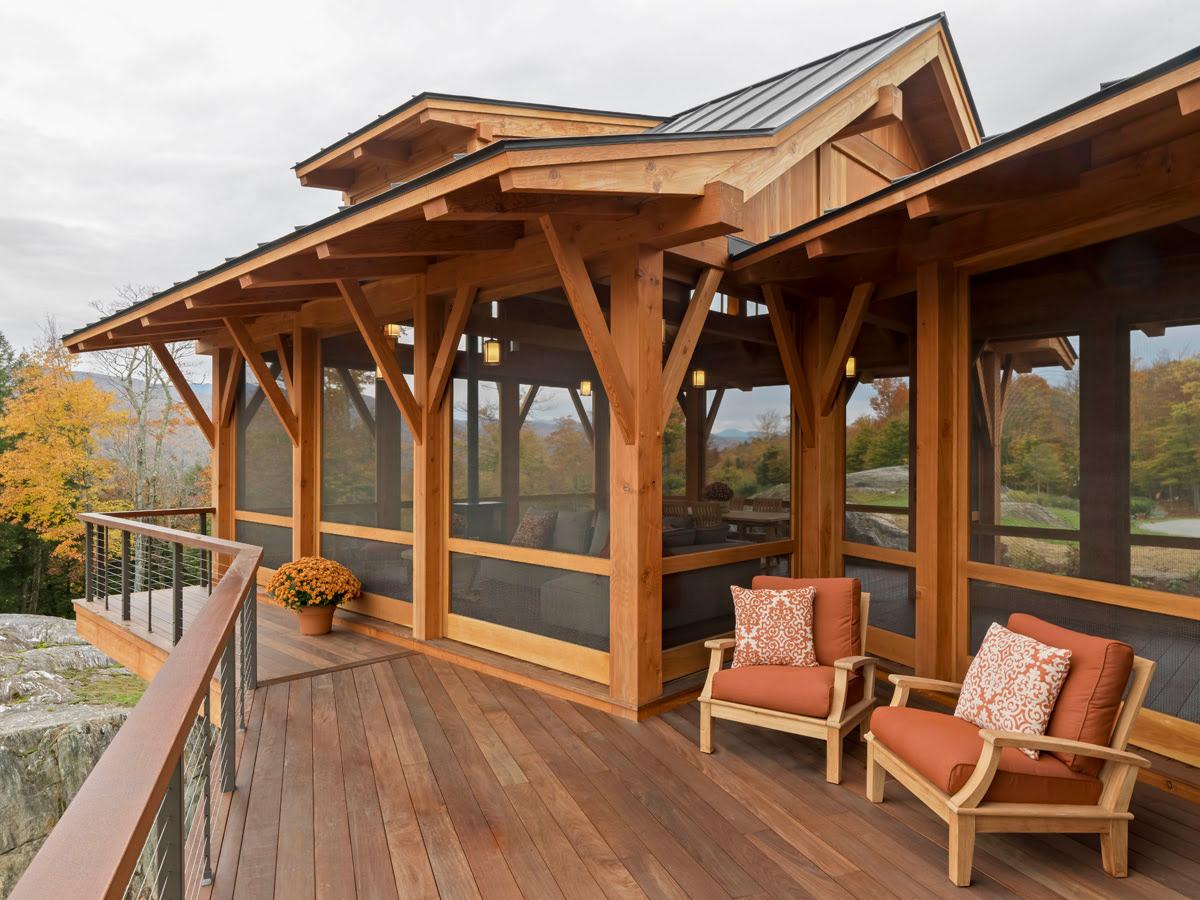
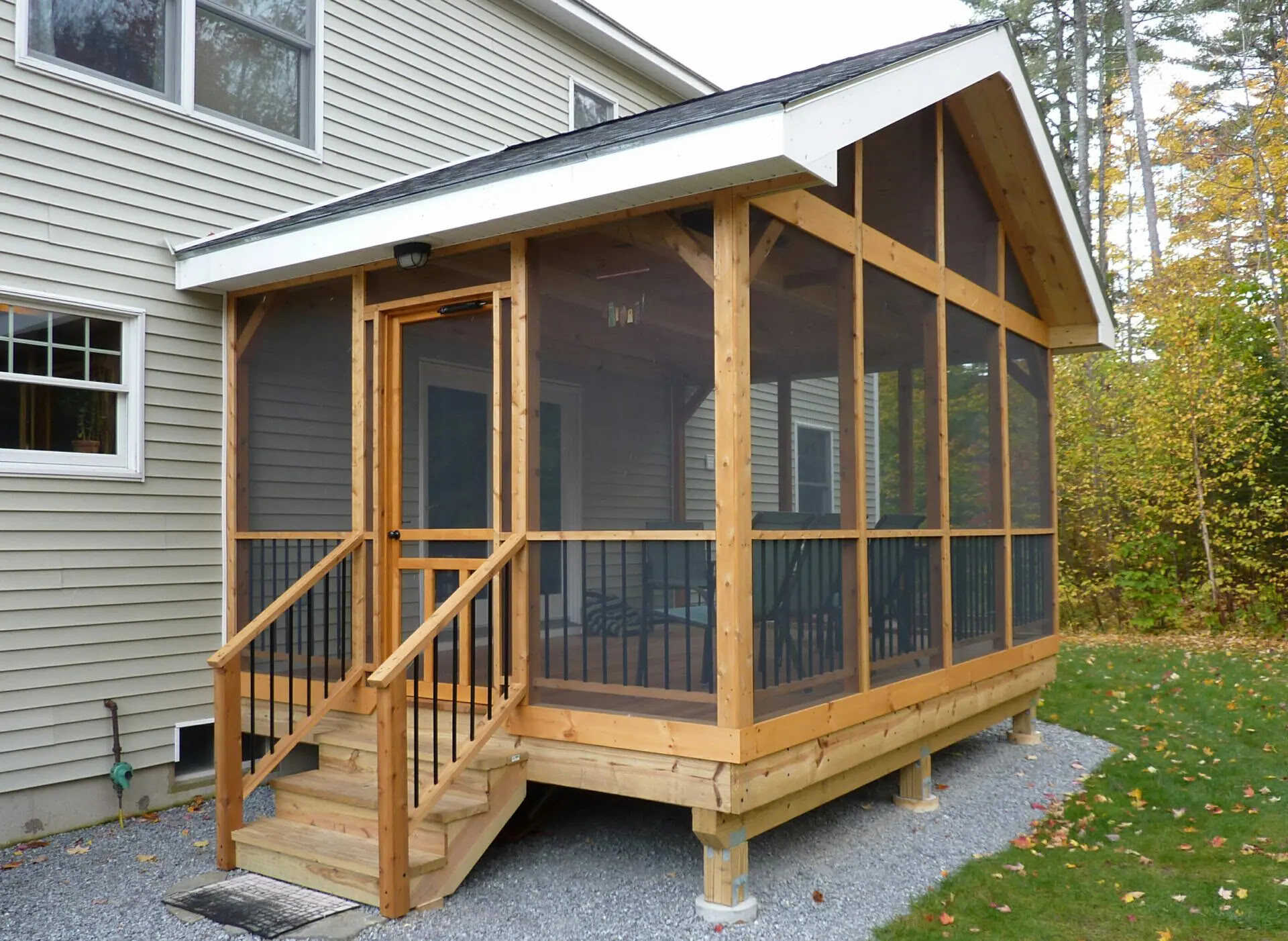
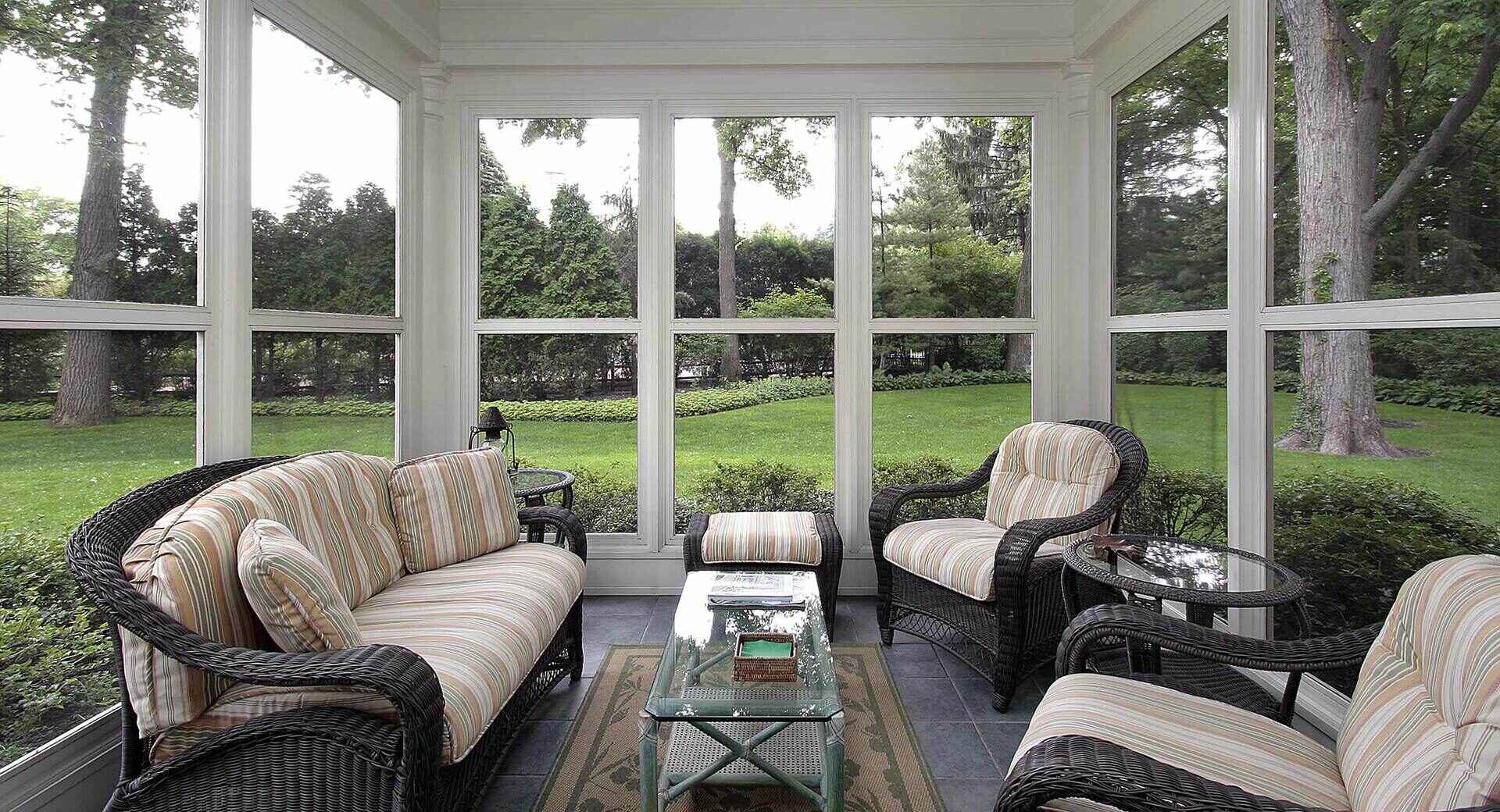
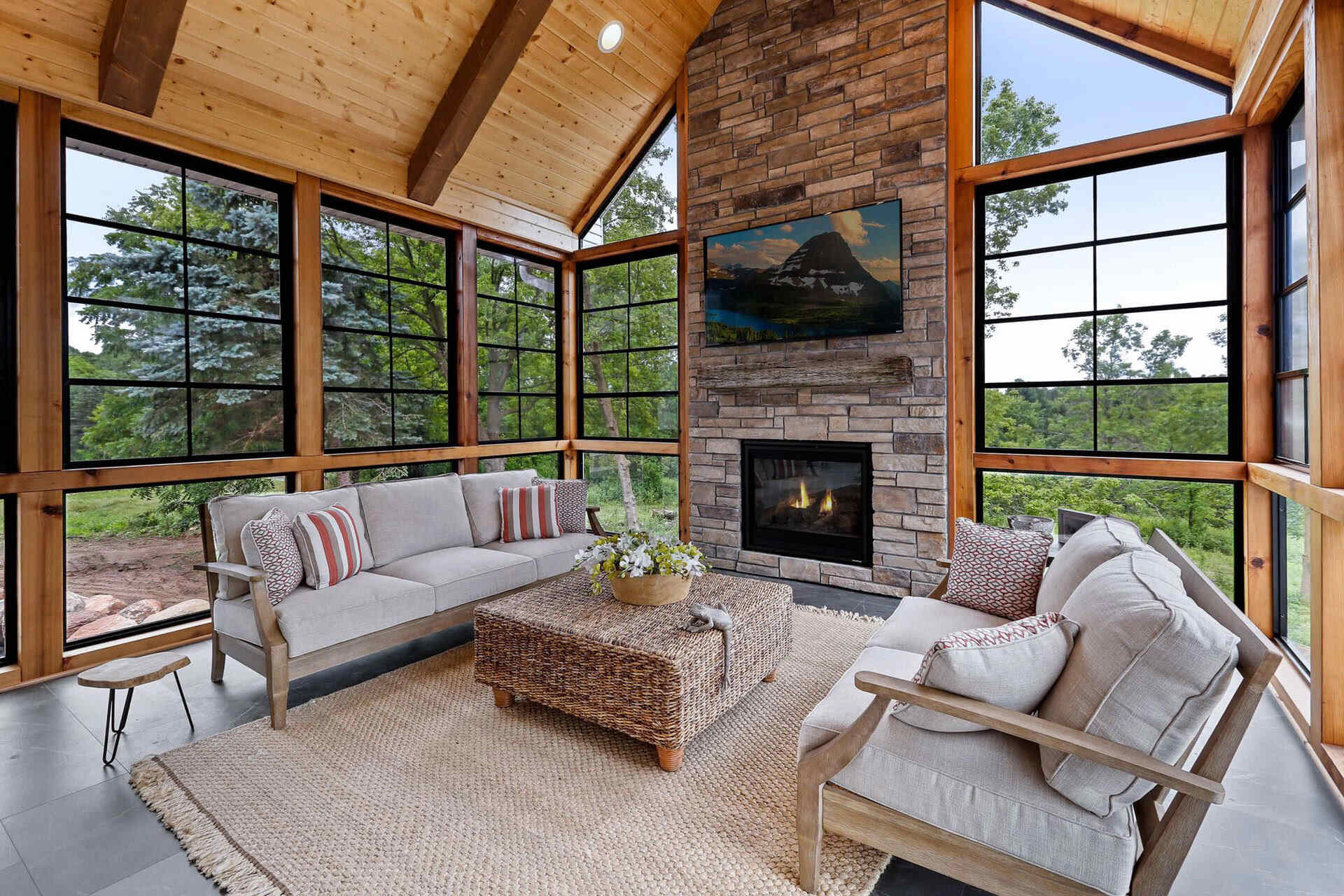
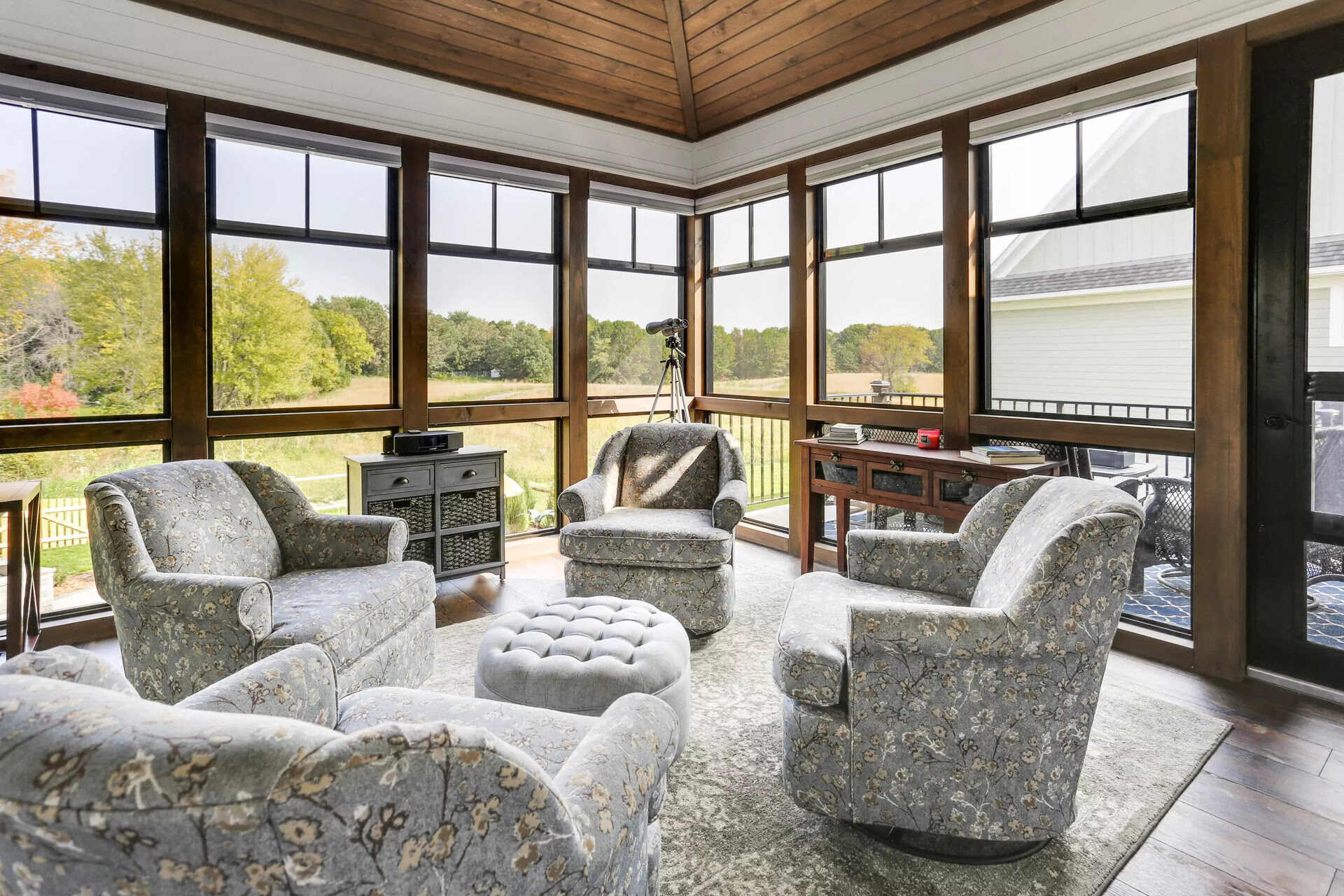
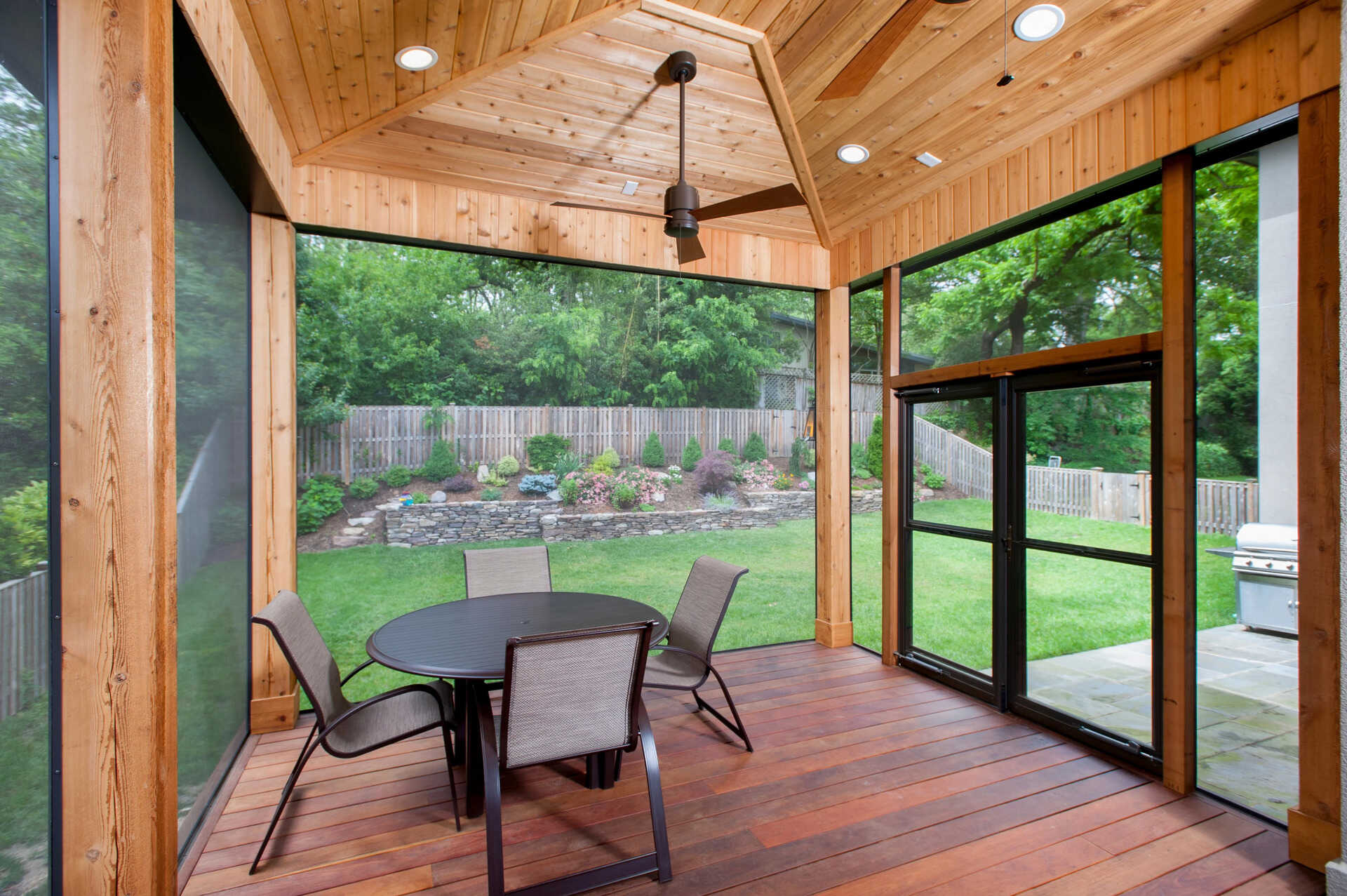

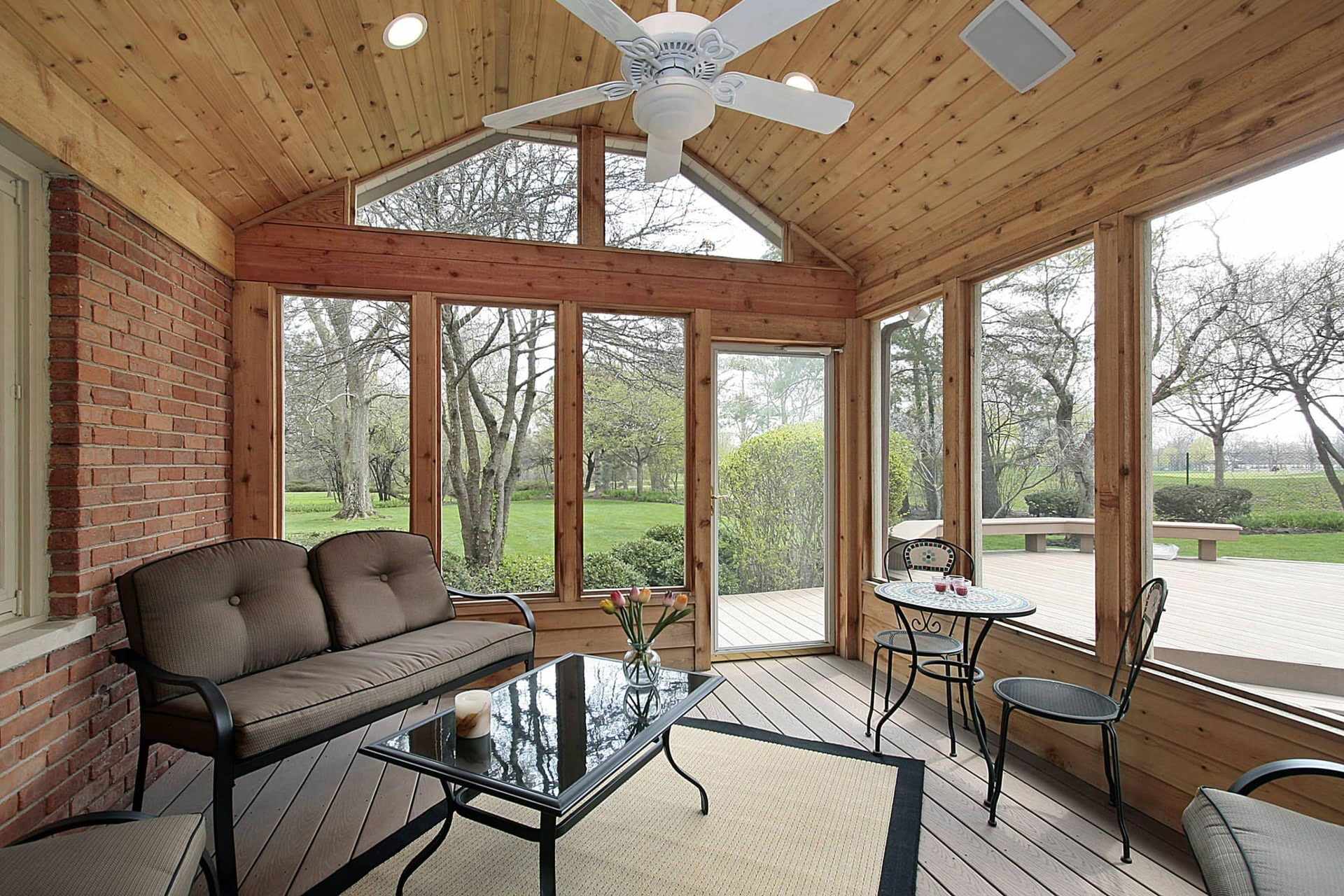
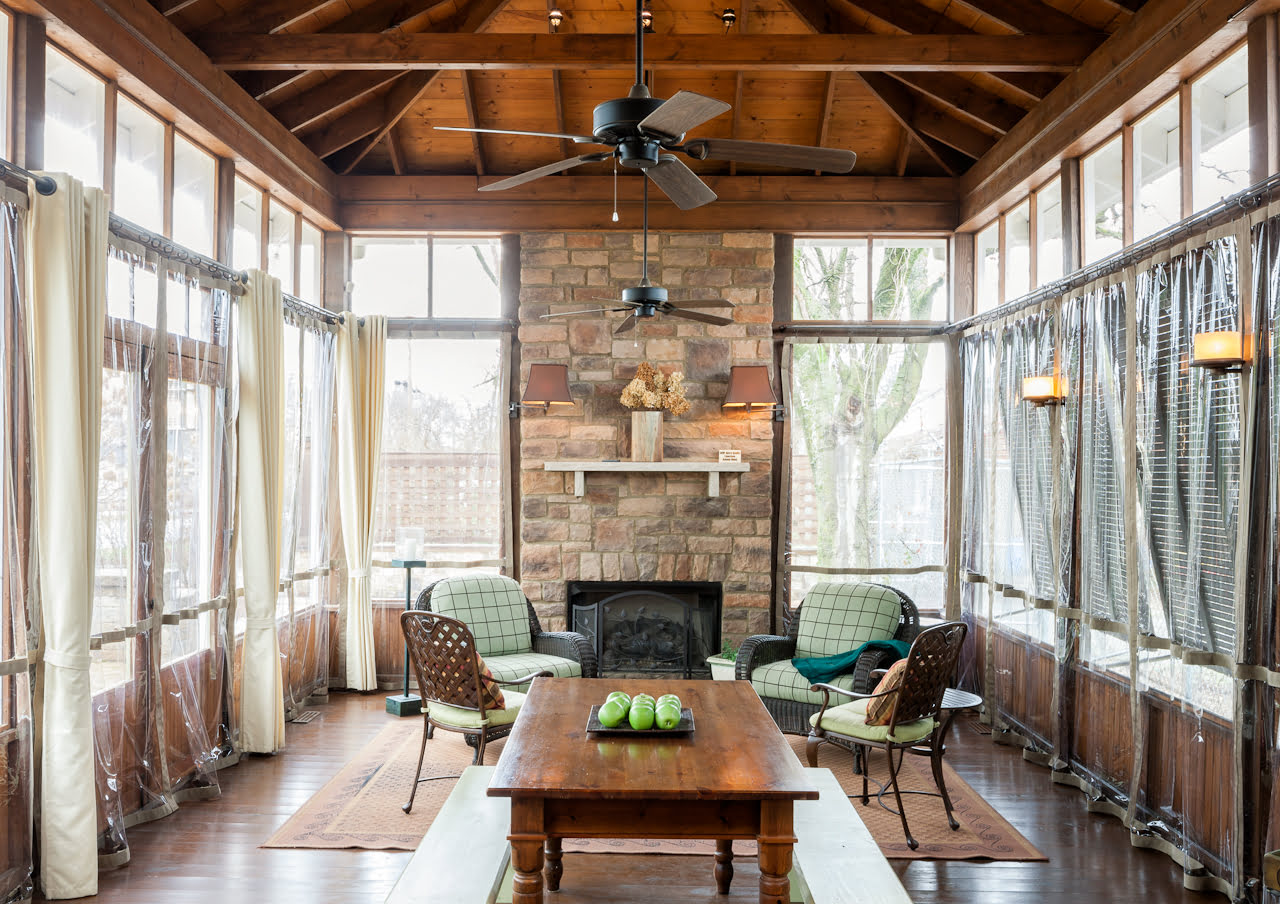
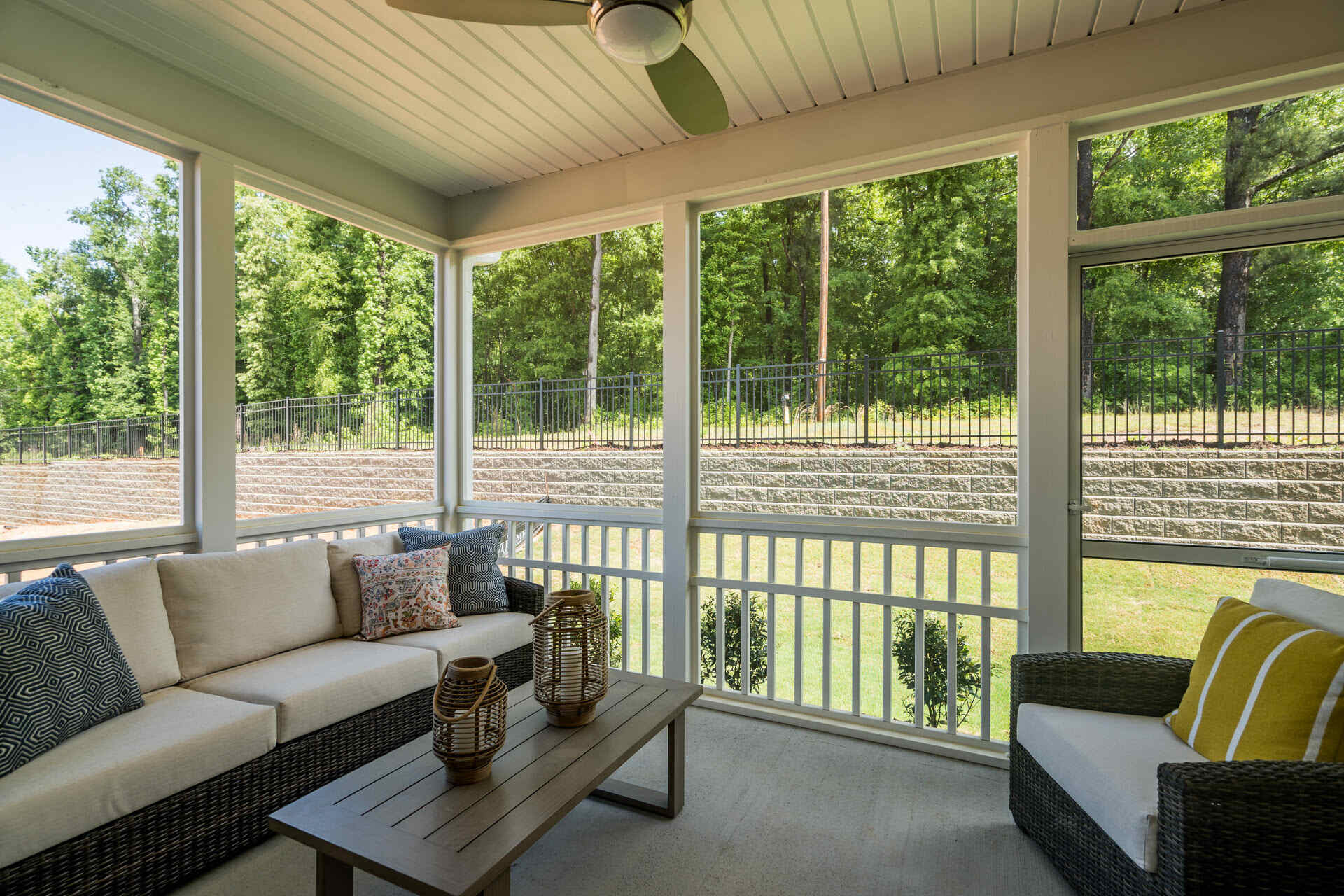
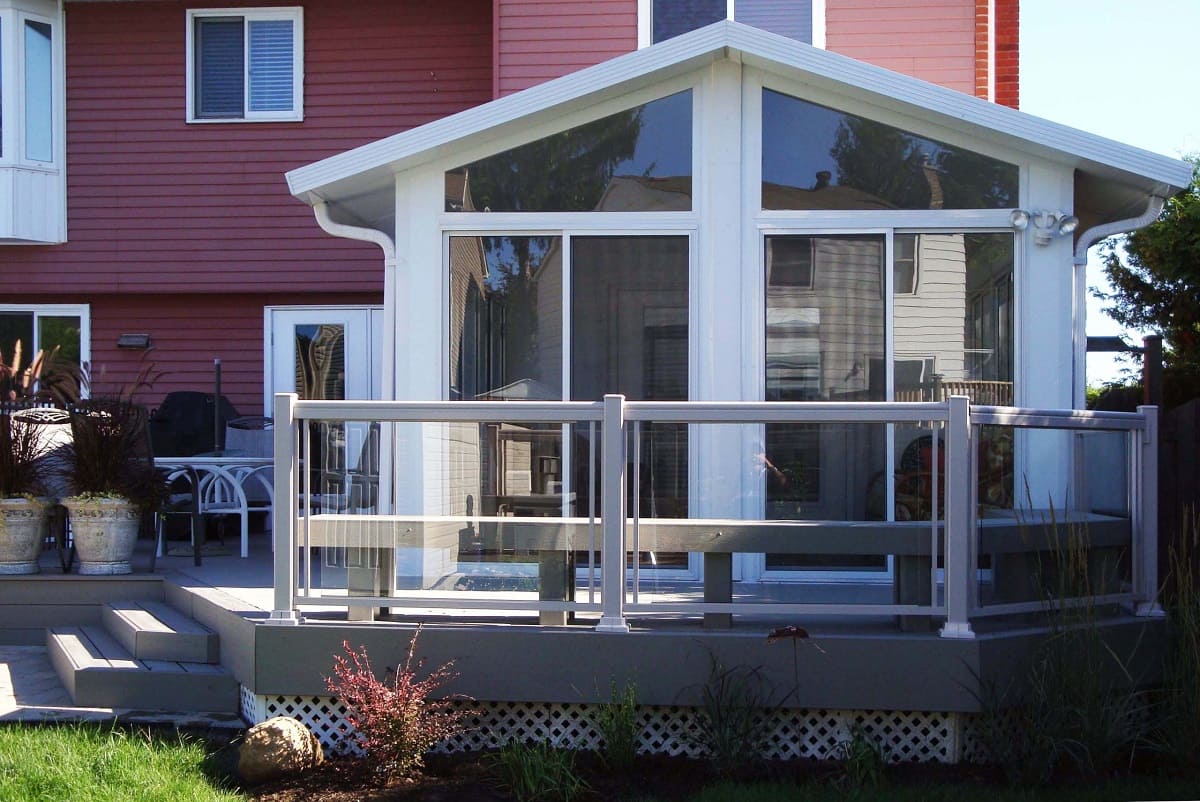
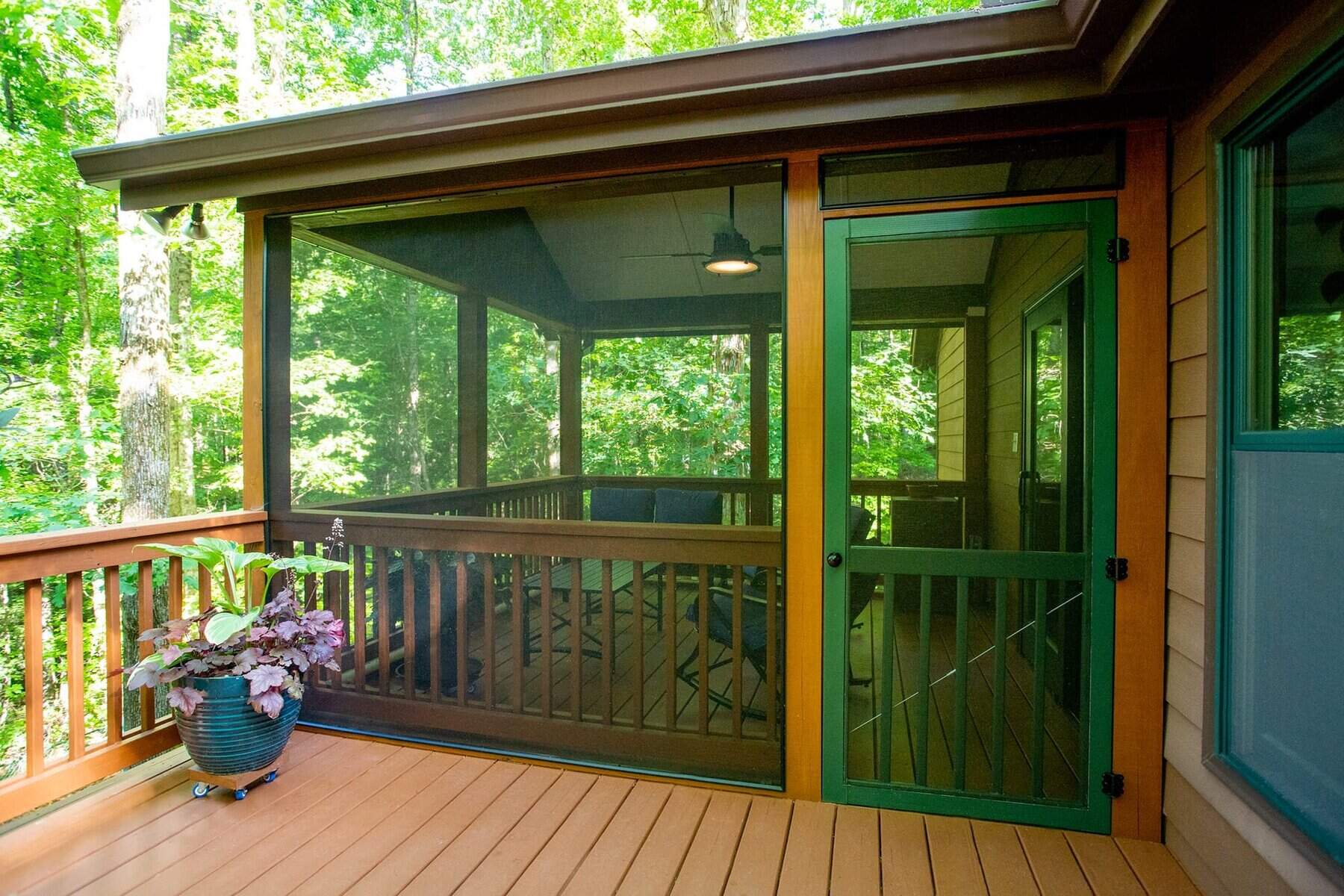

0 thoughts on “How To Turn A Screened Porch Into A Three Season Room”